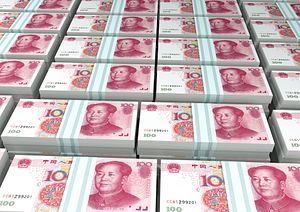To the surprise of economists, China’s economy is still going strong. China’s GDP in the third quarter of 2015 increased 6.9 percent compared to the same period of 2014. Although this is the first dip below 7 percent growth since the first quarter of 2009, when growth slowed to 6.2 percent, the figure was slightly better than expected.
Moreover, it seems that the service sector has become a main driver of economic growth in China. For the third quarter of 2015, the absolute value of the tertiary sector was 8.6 trillion yuan, almost 50 percent of the entire GDP of the quarter. This sector also expanded the fastest, at 8.6 percent growth.
However, there are still signs of weaknesses in the economy. First, if the fourth quarter produces the average amount of the GDP in the previous three quarters, the whole year’s GDP growth in nominal terms would be only 2.2 percent. The total GDP of 48,777.4 billion yuan for the first three quarters yields an average of 16,259.1 billion yuan for a quarter. The GDP for the year of 2015 would be 65,036.5 billion yuan if the fourth quarter GDP comes in at that number. Compared to the actual GDP of 63,613.9 billion yuan in 2014, the 2015 figure would be only 2.24 percent more in nominal terms (without any adjustment for inflation).
Second, it is likely that the secondary sector is being somewhat underestimated and the tertiary sector is somewhat overestimated. According to a news release from the National Bureau of Statistics of China on September 7, 2015, the secondary sector of 2014 actually generated 37.2 billion yuan more product than originally estimated, and the tertiary sector 70.1 billion less. In other words, the tertiary sector expanded by 7.8 percent instead of 8.1 percent as originally estimated. It remains to be seen whether there will be another downward revision of the tertiary sector for 2015.
The most worrying sign is that this is the first time since the first quarter of 2009 that nominal GDP growth was lower than the inflation-adjusted GDP growth. For the third quarter of 2015, the GDP deflator was -0.66 percent.
In fact, due to the massive stimulus in 2009, producer prices have been falling for the past 43 consecutive months. The problem is that the producer price deflation now has become a part of the wider economy.
If China is heading into a period of sustained deflation, like what has happened to Japan since the 1990s, there is a real danger of slipping into a deflationary vortex that will both deter entrepreneurs from further investment and discourage consumers from spending. In that sense, China might become another Japan.

































